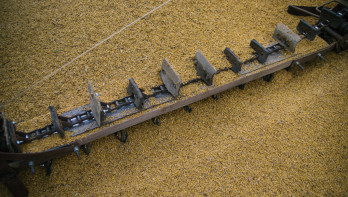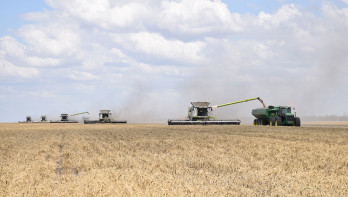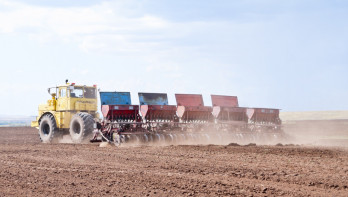Analysis Grains
Russian missile attacks do not gain traction on grain market
The tension in the Black Sea area is further escalating due to the recent Russian missile attacks on Ukraine. However, the grain market reacts only limitedly to this. Favorable conditions for the winter wheat harvest in the south of Russia and on the prairies in the US have more influence on the market. The USDA also contributed with the new Crop Progress report.
The September contract for wheat on the Matif closed €7 lower at €221.25 per ton yesterday. Wheat also had to give way on the CBoT and closed 3.4% lower at $5.53 per bushel. Corn dropped even harder during the last trading session by 3.8%. The closing price ended at $3.95¾ per bushel. Soybeans only experienced a limited loss of 1.2% to $11.74¼ per bushel.
In the Netherlands, we have a resurgence of summer weather today before new showers arrive, but in other parts of the world, dry weather is firmly in the forecasts. This is particularly noticeable in the wheat market. In Russia, it will remain dry for the next two weeks. Ideal conditions for the winter wheat harvest. The price for Russian Black Sea wheat is therefore under pressure. Ikar lowered the quotation by $10 to $216 per ton FOB (delivered on the ship). Partly, there is extra supply from farmers and cooperatives offering the last remnants from the silos of the previous harvest, and partly deals are being made with the new harvest.
The market is not reacting much to the attacks by Russia, including hitting a children's hospital in Kiev. This is increasing tension in the Black Sea region, but according to various analysts, traders are more influenced by the good yield expectations for grains in the US.
Combines keep up the pace
In the US, the weather is also favorable for the wheat harvest. The combine caravan does not slow down when we look at this week's Crop Progress report. 63% of the winter wheat acreage has been harvested, reasonably in line with expectations. The five-year average for this week stands at 52% harvested. Last season, at this time, the count was at 43%. In the largest wheat state, Kansas, 92% of the winter wheat has been harvested. Further north, in Montana, no winter wheat has been harvested according to the USDA. In Idaho and Washington, a very small start has been made with 1% and 2% harvested, respectively. The condition of spring wheat has improved according to the USDA. This week, 75% received a rating of good or excellent compared to 72% last week.
The condition of corn has also improved this week with 68% rated good or excellent compared to 67% last week. Growth is ahead of the five-year average. 24% of the corn is in the tassel stage compared to 14% in the five-year average. There is still some discussion about the condition of the corn from local sources. The showers of last week have certainly benefited the crop in part. Unfortunately, this is not the case everywhere. Reports of significant hail damage are also coming in.
Soybeans are not lagging behind corn and spring wheat, and here too, the crop condition has improved. 68% of the acreage received a good or excellent rating compared to 67% last week and 55% at this time last year. Growth is also slightly ahead of the five-year average with 34% of the crop in bloom this season compared to 28% in the average. Pea formation has already started on 9% of the acreage.




